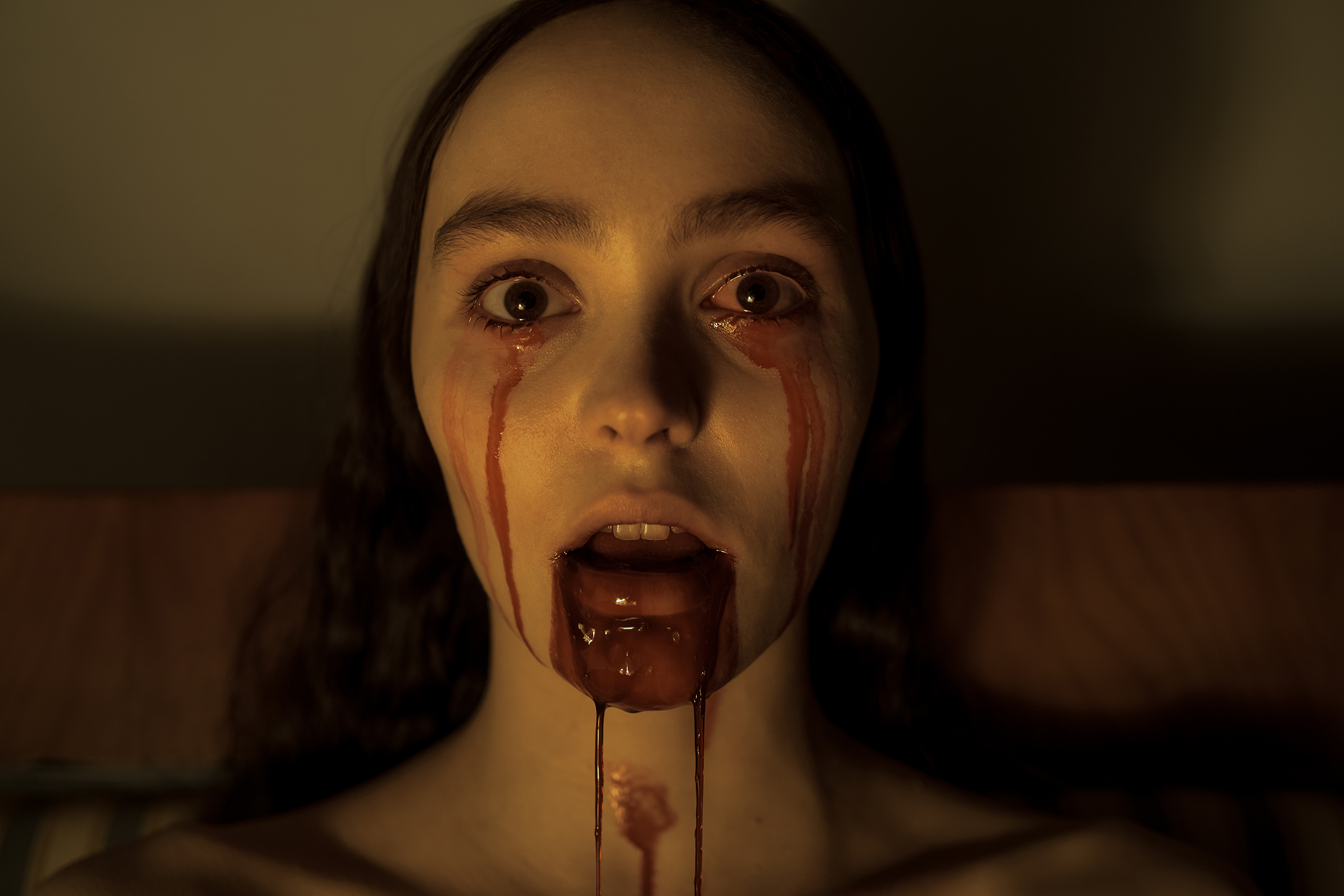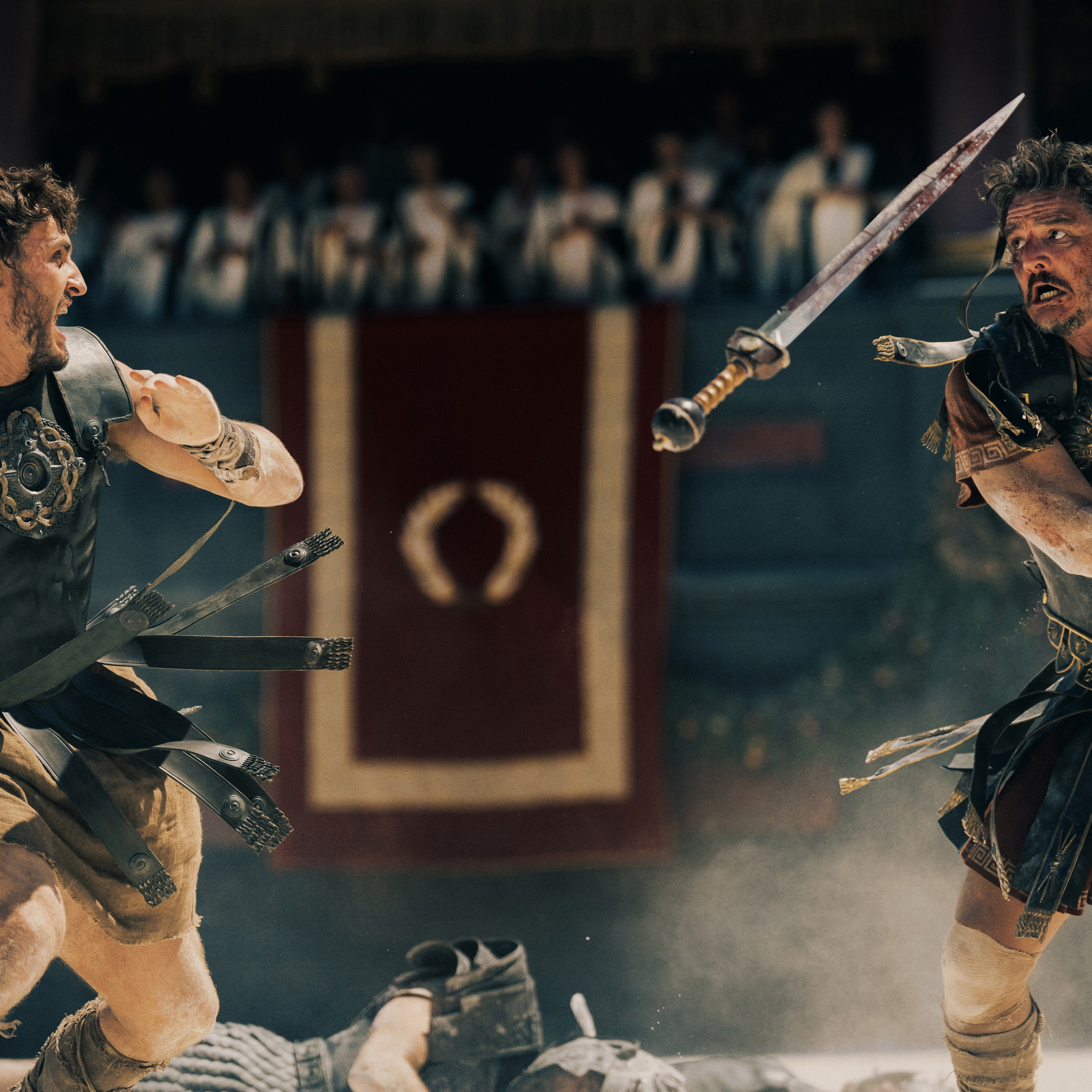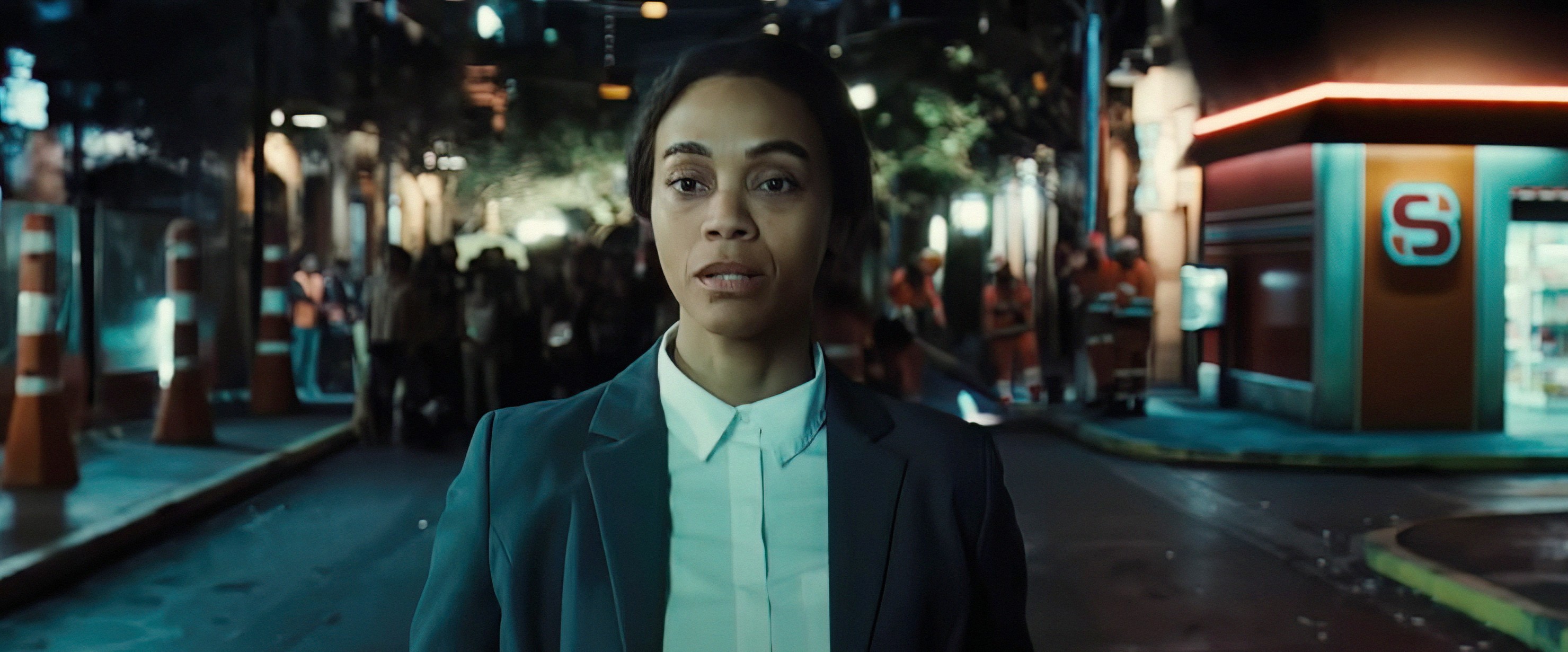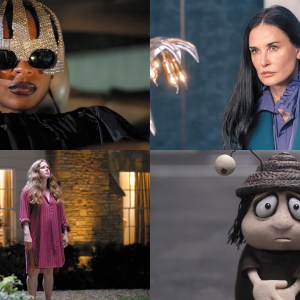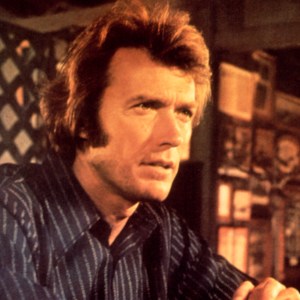By providing your information, you agree to our Terms of Use and our Privacy Policy. We use vendors that may also process your information to help provide our services. This site is protected by reCAPTCHA Enterprise and the Google Privacy Policy and Terms of Service apply.
2025 Oscars: Best Production Design Predictions

Nominations voting is from January 8-12, 2025, with official Oscar nominations announced January 17, 2025. Final voting is February 11-18, 2025. And finally, the 97th Oscars telecast will be broadcast on Sunday, March 2 and air live on ABC at 7 p.m. ET/ 4 p.m. PT. We update our picks through awards season, so keep checking IndieWire for all our 2025 Oscar predictions.
The State of the Race
“The Brutalist” (A24), “Nickel Boys” (Amazon MGM), “Blitz”(Apple TV+), “Saturday Night” (Sony Pictures), “Conclave” (Focus Features), “Emilia Pérez” (Netflix), “Maria” (Netflix), “Queer” (A24), and “September 5” (Paramount) have all emerged from the fall festivals as Best Production Design Oscar contenders.
Other films still to come are “Gladiator II” (Paramount), “Wicked” (Universal), “Nosferatu” (Focus Features), and “A Complete Unknown” (Searchlight Pictures).
“Dune: Part Two” (Warner Bros.) was the early favorite for continuing Denis Villeneuve’s epic sci-fi trilogy with bigger and more lavish world-building, but watch out for the hyper-real Oz extravaganza of Jon Chu’s “Wicked.”
Oscar-winning “Dune” production designer Patrice Vermette took a deeper dive into the Fremen and Harkonnen cultures, with 40 percent more sets to work with. The mysterious, hidden world of the nomadic Fremen is slowly being buried. This is the metaphor of the interior Sietch set, which is filled with sand. A bone harmonica inspired the Cave of Birds, the interior of which looks like giant fingerprints. The Maker’s Temple is a figure eight, symbolizing eternity, in which sand represents death and water life. The Cistern of Souls is where the Fremen collect water from the dead to sustain them in preparation for their dream of a green Arrakis, which Paul (Timothée Chalamet) promises to deliver.
For Giedi Primi, home of the tyrannical Hardonnen, Vermette was inspired by septic tanks because he associated the Hardonnen with having the morals of a sewer. This became the basis for his use of inky black plastic and silver. Cinematographer Greig Fraser used infrared cameras to bring the planet’s monochromatic atmosphere to life due to its black sun. For Vermette, that meant playing around creatively with black and white.

“Wicked,” Chu’s adaptation of the Broadway musical fantasy by Stephen Schwartz and Winnie Holzman, explores the teen friendship between the Wicked Witch and Glinda the Good Witch before they become rivals. Cynthia Erivo stars as Elphaba Thropp, the compassionate girl born with green skin, and Ariana Grande plays the conceited Galinda Upland. Filmed at England’s new Sky Studios in Elstree, production designer Nathan Crowley (a six-time Oscar nominee) and his team mapped out the film using models, illustrations, and visual references to create each environment (the most complex is the Italian-looking Shiz University, where Elphaba and Galinda first meet). He also conceived clever industrial tech (such as a practically-built automaton train). The result is an immersive magical realism.
In “Nosferatu,” director Robert Eggers reworks the legendary silent vampire film by F.W. Murnau (remade by Werner Herzog in 1979), with Bill Skarsgård as the infamous Count Orlok, Lily-Rose Depp as Ellen Hutter, and Nicholas Hoult as husband Thomas. Shot throughout Prague (including Barrandov Studios, the 14th-century Rožmitál Castle, and the Invalidovna complex), go-to production designer Craig Lathrop has plenty to work with to complement the desaturated Romanticism of Jarin Blaschke 35mm cinematography. It offers the chills and thrills of roving from 19th-century Germany to a Gothic castle in Romania, where the couple is haunted by dreams that could be harbingers of what’s to come and peek-a-boo with the elusive vampire lurking in the shadows.
“Gladiator II,” Ridley Scott’s sequel to his Oscar winner, takes place two decades later as the Roman Empire continues to implode. Go-to production designer Arthur Max and the art department built a massive recreation of ancient Rome in Malta (highlighted by a replica of the legendary Colosseum amphitheater, doubled digitally in post), which dwarfs anything from “Game of Thrones.” The focus is on Lucius (Paul Mescal), the former heir to the Empire, forced to enter the Colosseum as a ruthless gladiator. Denzel Washington’s Macrinus, a former slave-turned-merchant, uses Lucius as part of his power play by pitting him in the arena against Pedro Pascal’s Roman general, Marcus Acacius.
“Emilia Pérez,” the musical crime thriller from Jacques Audiard, stars Zoe Saldaña as a disgruntled lawyer who assists the titular Mexican cartel leader (Karla Sofía Gascón) in undergoing gender confirmation surgery. The director audaciously offers an operatic fever dream about the hope of a new life through song and dance — but it’s also about the difficulty in leading double lives. Production was designed by Emmanuelle Duplay and set decorated by Cécile Deleu. The film is set in Mexico City but was made on sound stages in Paris (with lots of blue screen work). A gaudy, neon-lit style predominates the musical sequences.
“The Brutalist,” from director Brady Corbet (“Vox Lux”), is a 215-minute epic spanning 30 years in the life of László Tóth (Adrien Brody), a Hungarian Jew and Auschwitz survivor, who struggles as a visionary architect before being offered a massive project by Lee Van Buren (Guy Pearce). The Brutalist architectural movement from the ’50s came out of post-war trauma. The non-decorative style was angular and comprised of exposed concrete or brick. Production designer Judy Becker made prop models for Tóth and actual models to build the sets and furniture, driven by the starkness and minimalism of the style. One of the most prominent sets was the Institute, which was Tóth’s passion project, representing both the imprisonment of the concentration camp barracks and the idea of freedom.
“Megalopolis” (Lionsgate), Francis Ford Coppola’s $120 million epic sci-fi passion project drawing parallels between the fall of Rome and the collapse of America, is set in a New York-like metropolis called New Rome. After an accident destroys the decaying city, an architect (Adam Driver) with the power to control time attempts to rebuild it as a utopia through his miracle-building material, Megalon, a glowing, translucent, yellow substance with organic shapes. Production designer Bradley Rubin stepped in when production was underway and adapted to the director’s abstract methodology of leaning into the theatrical while trying to get a visual handle on the Megalopolis set (shot at Trilith Studios).
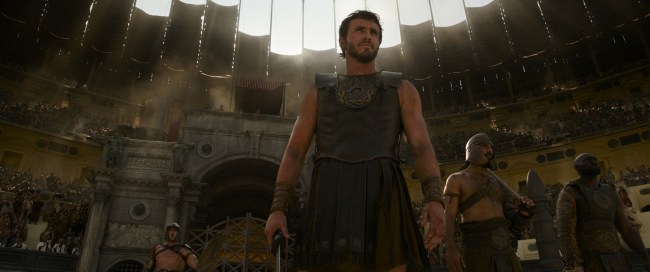
As for the rest: “Blitz” reunites director Steve McQueen with production designer Adam Stockhausen (“Widows,” “12 Years a Slave”) for a drama about Londoners during the German Blitz of World War II. Starring Saoirse Ronan, youngster Elliott Heffernan, and singer/songwriter Paul Weller (The Jam), it comes on the heels of the director’s World War II doc “Occupied City.” Warner Bros. Studios, Leavesden served as the hub, with filming occurring close to Waterloo Station and the London borough of Greenwich. One of the highlights is the munitions factory where Ronan works.
“September 5,” director Tim Fehlbaum’s (“Hell”) docudrama about ABC Sports’ groundbreaking broadcast of the Israeli terrorist attack during the 1972 Munich Olympics, recalls the tense, suspenseful journalistic procedural of “All the President’s Men.” Production designed by Julian Wagner, the film offers an authentic replica of the broadcasting facility used by ABC and makes extraordinary use of archival footage.
“Queer,” Guadagnino’s most personal film (a tribute to the films of Michael Powell and Emeric Pressburger), is an adaptation of William S. Burroughs’ semi-autobiographical novella. Production designed by Stefano Baisi and shot at Cinecittà Studios and on location in Quito, Ecuador, it’s about disconnected gay American expatriates in 1940s Mexico City. The film concerns William Lee (Daniel Craig) falling for the much younger and enigmatic Eugene Allerton (Drew Starkey). They are both drug addicts who go on a surreal odyssey together and wind up in the Ecuadorian jungle.
“Nickel Boys,” RaMell Ross’ adaptation of Colson Whitehead’s Pulitzer Prize-winning novel, follows two Black teenagers, Elwood (Ethan Herisse) and Turner (Brandon Wilson), who become friends as wards of a barbaric juvenile reform school in Jim Crow–era Florida. The film is a sensory experience about their different perspectives — hope and despair — which is reflected in the production design of Nora Mendis. She recreates the haunting environment of the notorious Dozier School for Boys (which the film’s titular institution is patterned after), aided by meticulous research and the use of real photos from the Florida Memory Project. While Elwood’s moments are grounded in stark reality, Turner’s memories are filled with small surreal details, such as clocks without hands that evoke trauma and loss.

“September 5,” director Tim Fehlbaum’s (“Hell”) docudrama about ABC Sports’ groundbreaking broadcast of the Israeli terrorist attack during the 1972 Munich Olympics, recalls the tense, suspenseful journalistic procedural of “All the President’s Men.” Production designed by Julian Wagner, the film offers an authentic replica of the broadcasting facility used by ABC and makes extraordinary use of archival footage.
“Queer,” Guadagnino’s most personal film (a tribute to the films of Michael Powell and Emeric Pressburger), is an adaptation of William S. Burroughs’ semi-autobiographical novella. Production designed by Stefano Baisi and shot at Cinecittà Studios and on location in Quito, Ecuador, it’s about disconnected gay American expatriates in 1940s Mexico City. The film concerns William Lee (Daniel Craig) falling for the much younger and enigmatic Eugene Allerton (Drew Starkey). They are both drug addicts who go on a surreal odyssey together and wind up in the Ecuadorian jungle.
“Nickel Boys,” RaMell Ross’ adaptation of Colson Whitehead’s Pulitzer Prize-winning novel, follows two Black teenagers, Elwood (Ethan Herisse) and Turner (Brandon Wilson), who become friends as wards of a barbaric juvenile reform school in Jim Crow–era Florida. The film is a sensory experience about their different perspectives — hope and despair — which is reflected in the production design of Nora Mendis. She recreates the haunting environment of the notorious Dozier School for Boys (which the film’s titular institution is patterned after), aided by meticulous research and the use of real photos from the Florida Memory Project. While Elwood’s moments are grounded in stark reality, Turner’s memories are filled with small surreal details, such as clocks without hands that evoke trauma and loss.
“The Piano Lesson” (Netflix), Malcolm Washington’s adaption of the August Wilson play starring John David Washington and Samuel L. Jackson, explores the lives of the Charles family in 1936 Pittsburgh and the importance of the cherished family heirloom: a piano documenting the family history through carvings made by their enslaved ancestor. David Bomba not only gets to production design the Depression-era house but also the crucial piano with its iconic mask.
“Joker: Folie à Deux” (Warner Bros.) Todd Phillips’ musical thriller, picks up with Arthur/Joker (Joaquin Phoenix) facing the death penalty for multiple murders and striking up a delusional romance with Lady Gaga’s Harley Quinn while incarcerated in Arkham. Production designer Mark Friedberg returns to take us from the street into the prison, delving more directly into Arthur’s musical fantasies, which spill over into the courthouse.

Tim Burton’s “Beetlejuice Beetlejuice” (Warner Bros.), the sequel to his horror comedy, sees Michael Keaton’s foul-mouth ghoul accidentally return from the afterlife to torment the Deetz family 36 years later. Winona Ryder and Catherine O’Hara also return and are joined by newcomers Jenna Ortega, Justin Theroux, Monica Bellucci, Arthur Conti, and Willem Dafoe. Production designer Mark Scruton (“Wednesday”) conjures a kitschy, Burton-esque afterlife, where the dead wait in purgatory for the Soul Train.
Robert Zemeckis’ “Here” (Sony Pictures), based on the graphic novel by Richard McGuire about the inhabitants of a house throughout time, offers production designer Ashley Lamont the unique opportunity to chronicle space and time on an evolving set. The focus is a couple played by Tom Hanks and Robin Wright (reunited from “Forrest Gump”), who meet and marry in the late ’60s, raise a family, and grow old together. Zemeckis has adopted a virtual production methodology around Metaphysic Live, the generative AI software from Metaphysic, which face-swaps and de-ages the actors in real-time as they perform.
“Conclave,” Edward Berger’s follow-up to “All Quiet on the Western Front,” is a psychological thriller in which Ralph Fiennes’ Cardinal searches for a successor to the deceased Pope, who harbored a dark secret. Production designer Suzie Davies (“Saltburn”) meticulously recreated the Vatican interiors at Cinecittà Studios, especially the sequestered conclave inside the Sistine Chapel. This was a combination of light and dark, traditional and modern, male and female. For example, there’s a hermetically sealed, posh prison approach to the fictional Casa Santa Marta Vatican apartments, where the cardinals reside, and slightly more freedom inside the Sistine Chapel. Fortunately, Cinecittà had an existing set for the latter in storage that it could restore using the same painters.
“Saturday Night” (Sony Pictures), from director Jason Reitman, chronicles the lead-up to the premiere of NBC’s iconic late-night sketch comedy show, starring Gabriel LaBelle (“The Fabelmans”) as “SNL” creator/producer Lorne Michaels and an ensemble cast as the “Not Ready for Prime Time Players.” Production designer Jess Gonchor and the art department fully recreated the 8th and 9th floors of Rockefeller Center (especially Studio 8H) on soundstages in Atlanta. This helped immerse the actors in an exact replica of the environment, surrounded by lots of simultaneous mics and others built into the set.
“Maria,” Pablo Larraín’s biographically inspired drama about opera singer Maria Callas (Angelina Jolie), takes place during her final years in Paris in the ’70s. Production designed by Guy Hendrix Dyas, it continues the director’s cycle of psychological portraits (“Jackie,” “Spencer”) and contains a visual concept that fuses the ’40s through the ’70s with surreal musical sequences.
“A Complete Unknown” (Searchlight Pictures), James Mangold’s Bob Dylan biopic starring Timothée Chalamet and production designed by François Audouy, concerns the folk star’s rise in New York’s West Village in 1961 to the controversial 1965 Newport Folk Festival, where he turned electric.
Potential nominees are listed in alphabetical order; no film will be deemed a frontrunner until we have seen it.
Frontrunners
“Dune: Part Two”
“Emilia Pérez”
“Gladiator II”
“Nosferatu”
“Wicked”
Contenders
“Beetlejuice Beetlejuice”
“Blitz”
“The Brutalist”
“A Complete Unknown”
“Conclave”
“Here”
“Joker: Folie à Deux”
“Maria”
“Megalopolis”
“Nickel Boys”
“The Piano Lesson”
“Queer”
“Saturday Night”
“September 5”
By providing your information, you agree to our Terms of Use and our Privacy Policy. We use vendors that may also process your information to help provide our services. This site is protected by reCAPTCHA Enterprise and the Google Privacy Policy and Terms of Service apply.



